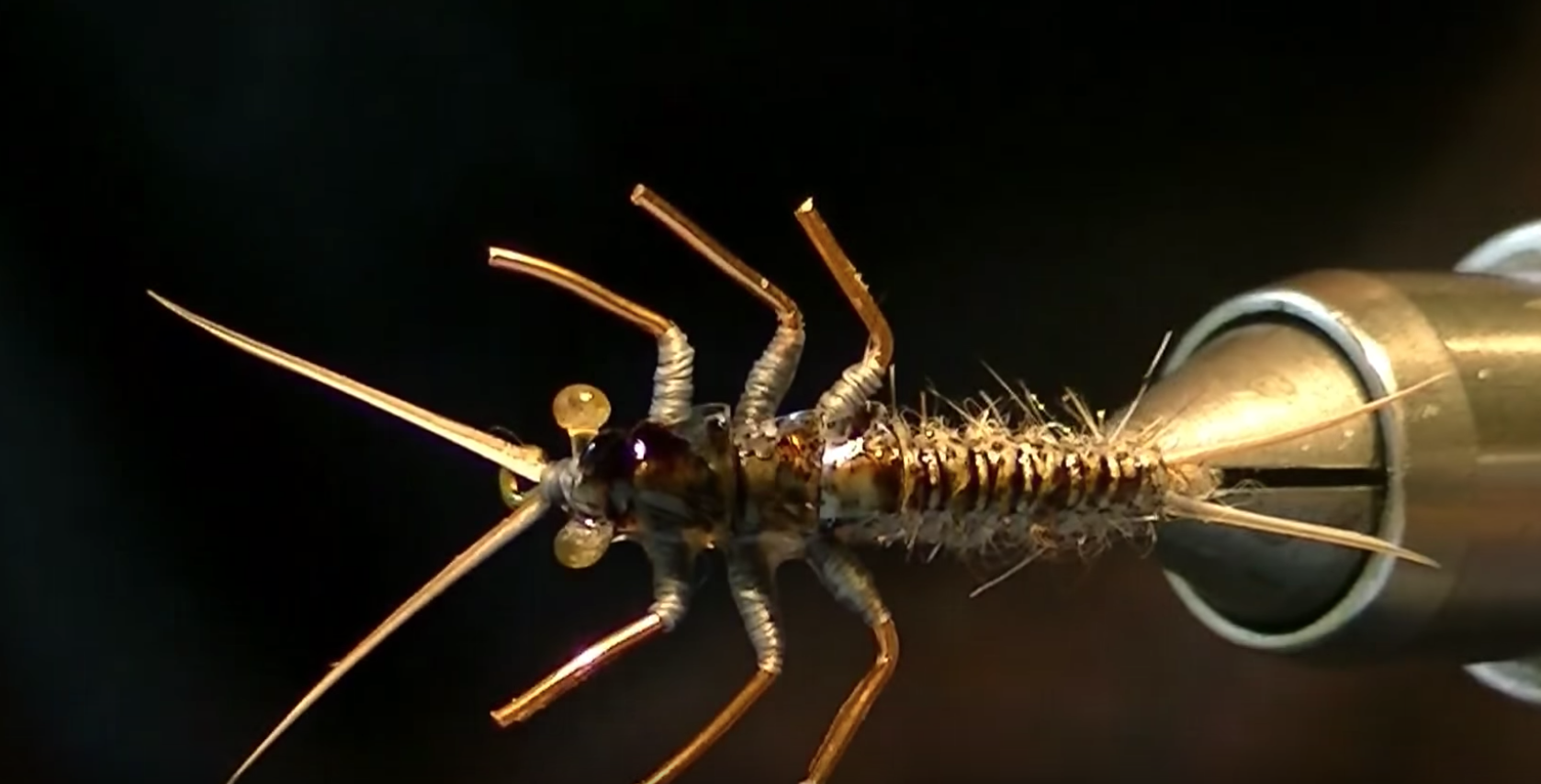Montée par Ruben Martin
Matériaux:
Hook: TMC 5262 #4 o #6
Thread: UNI 8/0 o UNI 6/0, grey or tan
Weight: lead tape
Tails and antennae: peacook wing biots
Rib: clear Vinyl Rib, XS.
Abdomen: Hare and antron dubbing mixed, grey or tan.
Back: Thin Skin clear black mottled, painted with Vitreaux lacquer transluscent brown/olive mixed.
Wing cases: Thin Skin clear and black mottled, painted with Vitreaux lacquer transluscent brown/olive mixed.
Legs: Heavy cooper wire, cover half with thread and UV resin.
Eyes: burned monofilament.
Thorax: thread, covered with UV resin and paint with tan color laquer
Notes de l’auteur: Stonefly nymphs (Order Plecoptera) are of a wide variety of sizes and are usually common those of medium and large sizes. An interesting fact is that in studies of food availability and food eaten by the trout is not uncommon to determine a preference in this order. An important aspect of this order is to prefer the stones or logs of good running rivers and large water oxygenation, their larvae are not good swimmers and being detached from the place to which are attached at the bottom often maintain a rigid position while resulting in the current until they are deposited on the bottom if you do not end up in the jaws of a fish on the way, during the drift usually in an upright position or curved, statically and in many cases with belly up . I think when it comes to imitating nymphs Stone are two very important aspects, one is that imitation achieved quickly get to the bottom and stay in that area of flow, and the second is that imitations must have a high degree of realism. This type of flies often have negative side that have a texture too hard, which makes fish the retain very little time before expel, but this aspect is offset by the large number of strikes that we get, in these situations we must have an excellent control of the line and be very fast in nail when we feel the strike. Traduction souhaitée?.
Une mouche de pierre très réaliste. Est-ce vraiment nécessaire et utile en pêche?
Noter qu’il vaut mieux monter cette nymphe avec des matériaux mous (type dubbing) car le poisson gardera plus longtemps la mouche dans la gueule avant de la recracher (voir ce que dit l’auteur à ce sujet). De la même façon les pattes en caoutchouc à la place des biots d’oies est peut être préférable.
Choisir plutôt une grande taille qu’une petite. A l’inverse d’autres modèles de mouches, je pense qu’il n’est pas nécessaire d’avoir différentes tailles pour la mouche de pierre, deux devraient suffire, une grande (hameçon 6/8) et une moyenne (hameçon 10). Voir la rubrique "Les couleurs" dans laquelle on aura pour chaque espèces la taille de la mouche.



